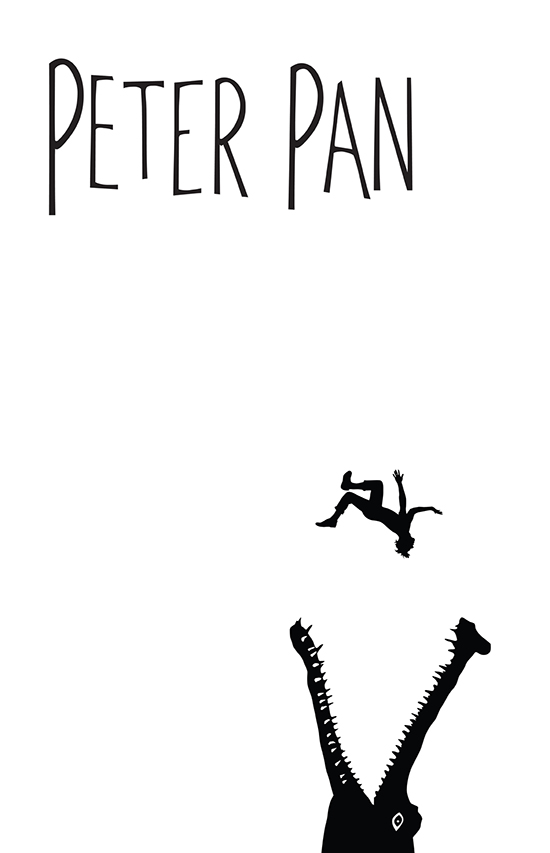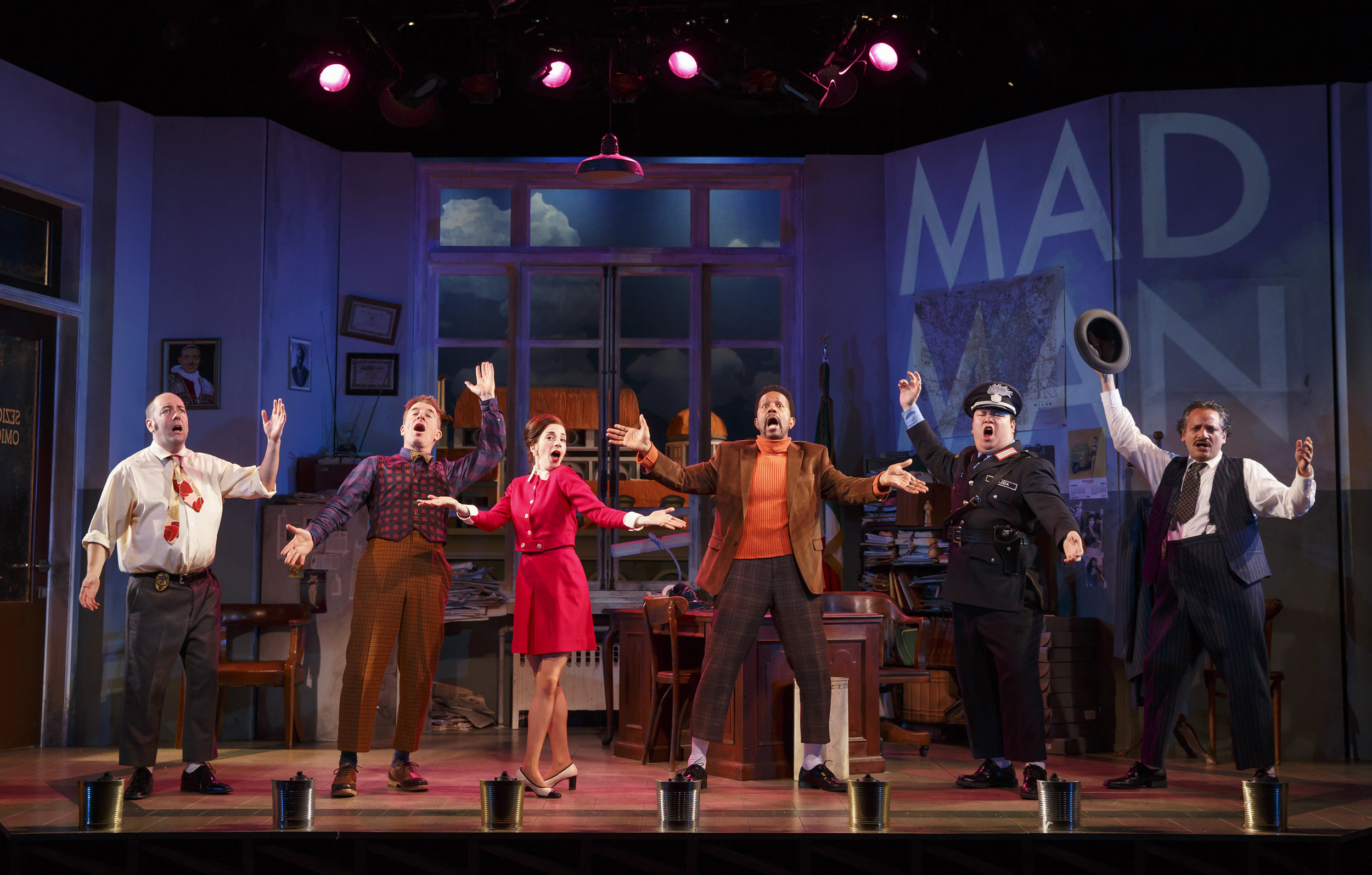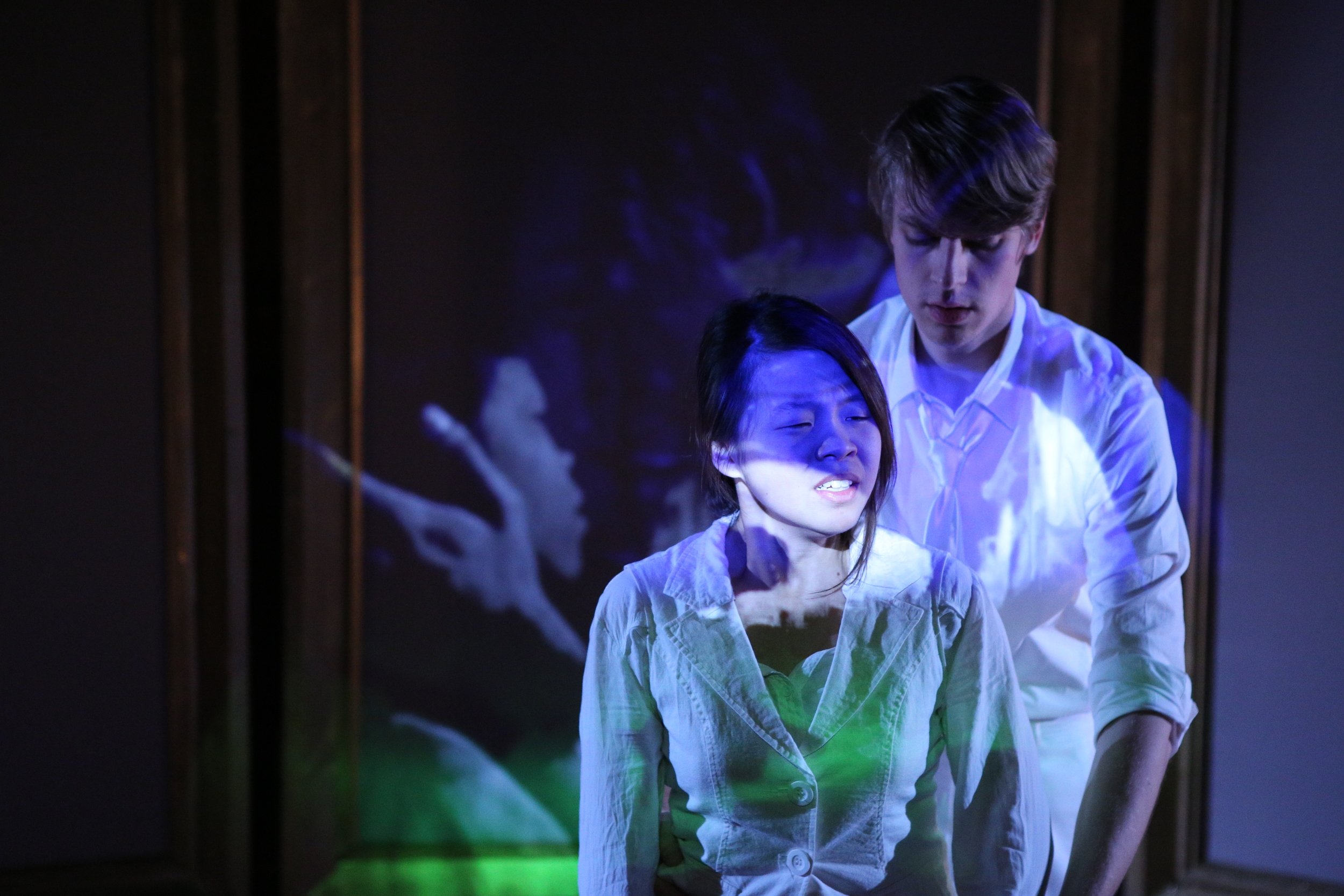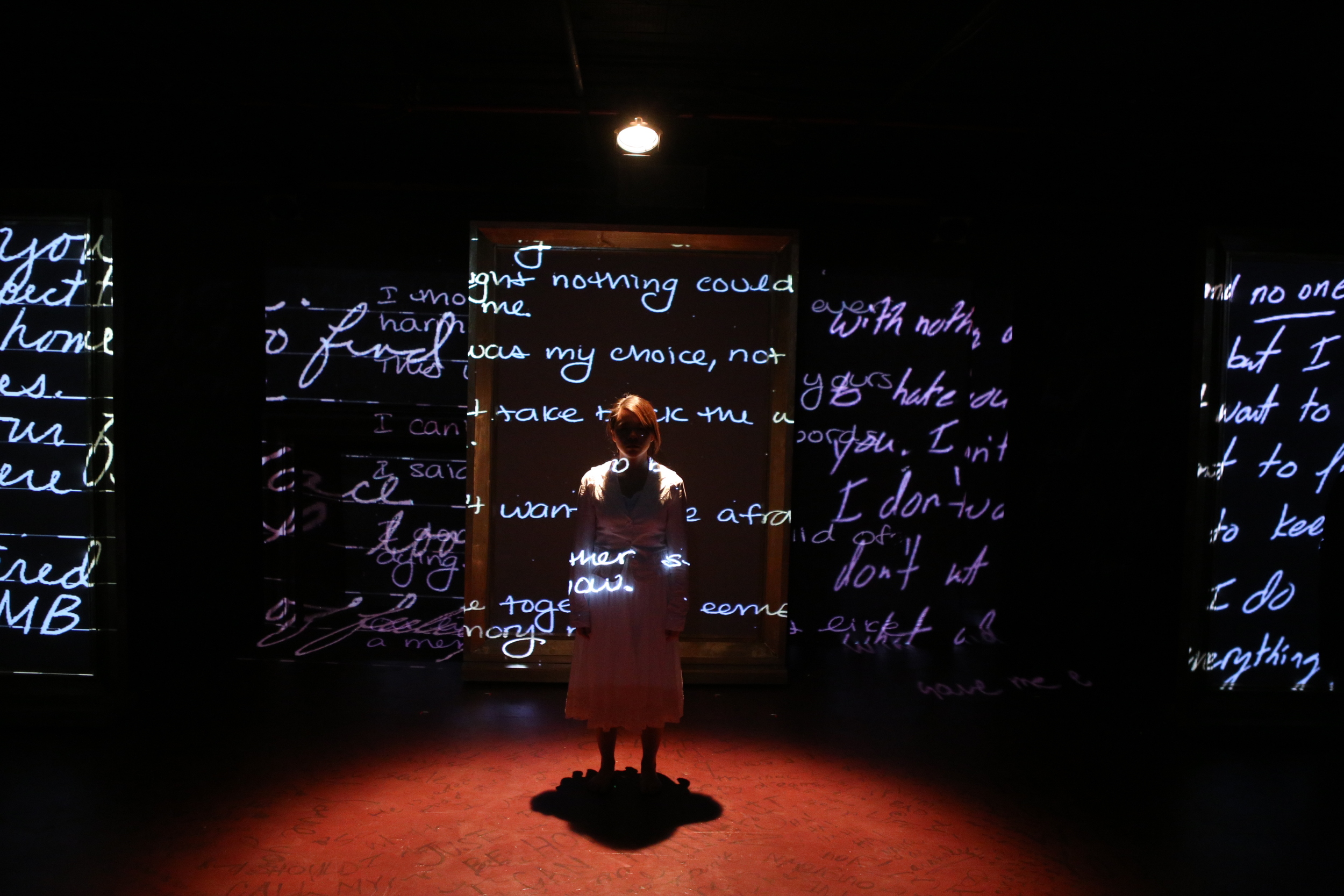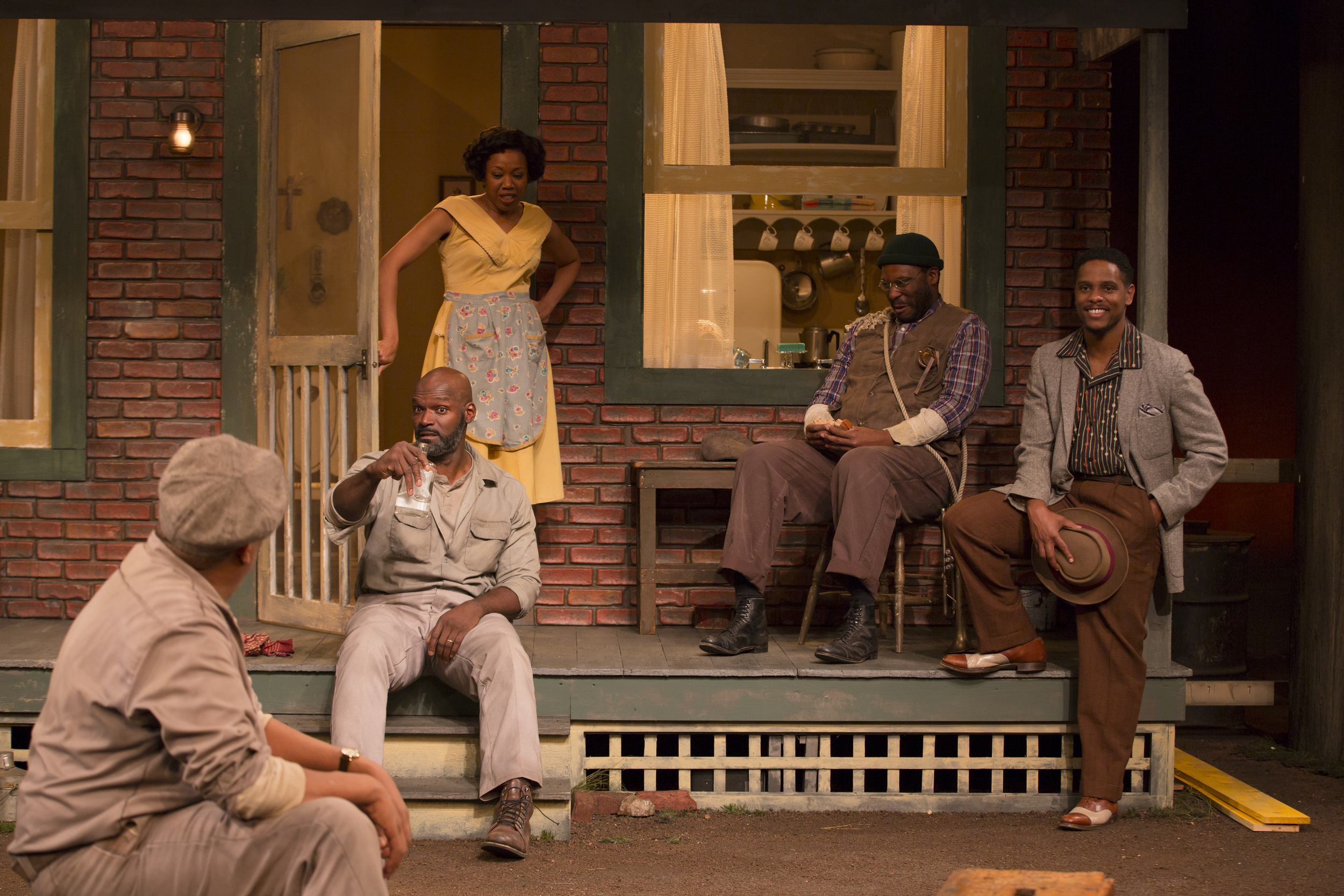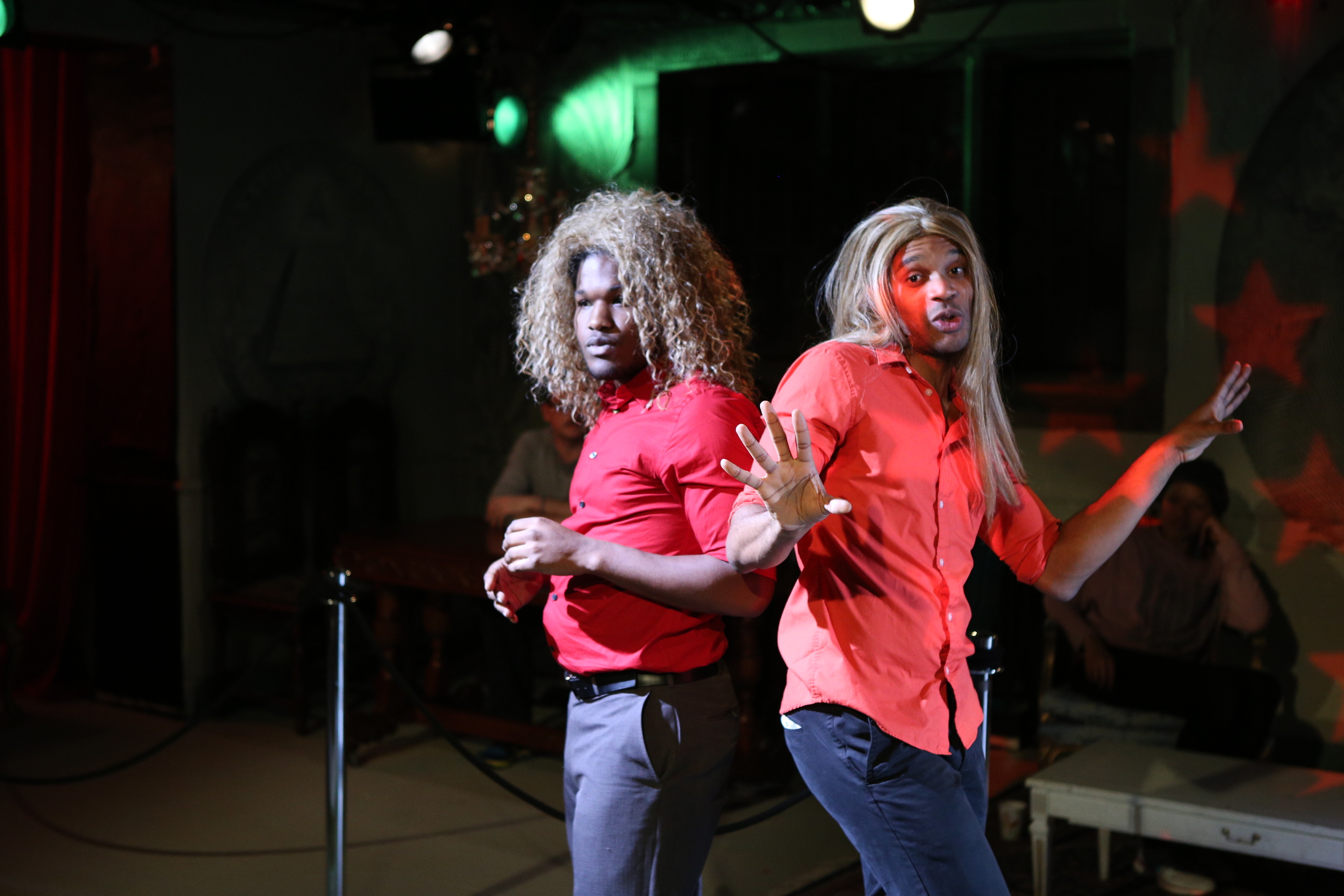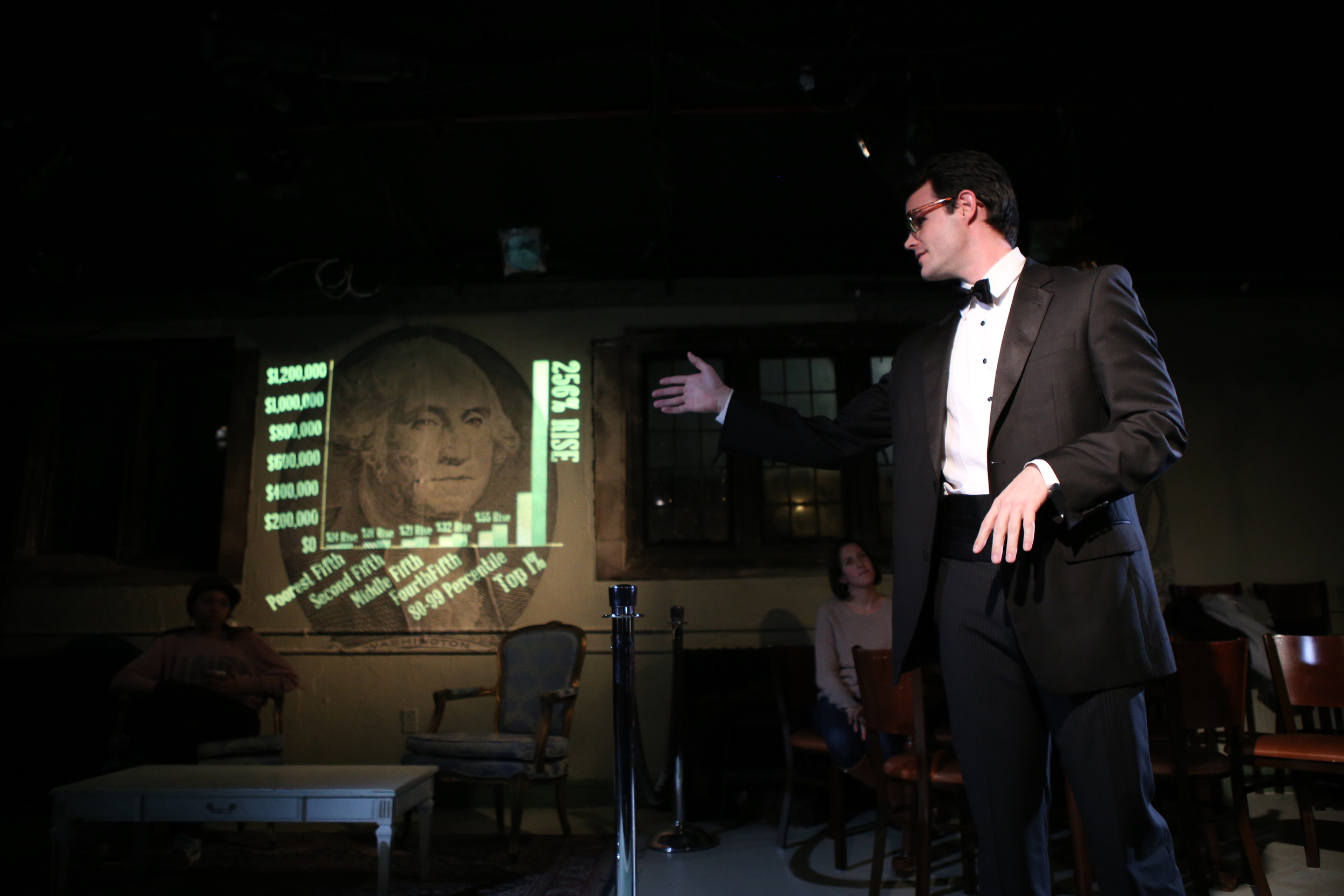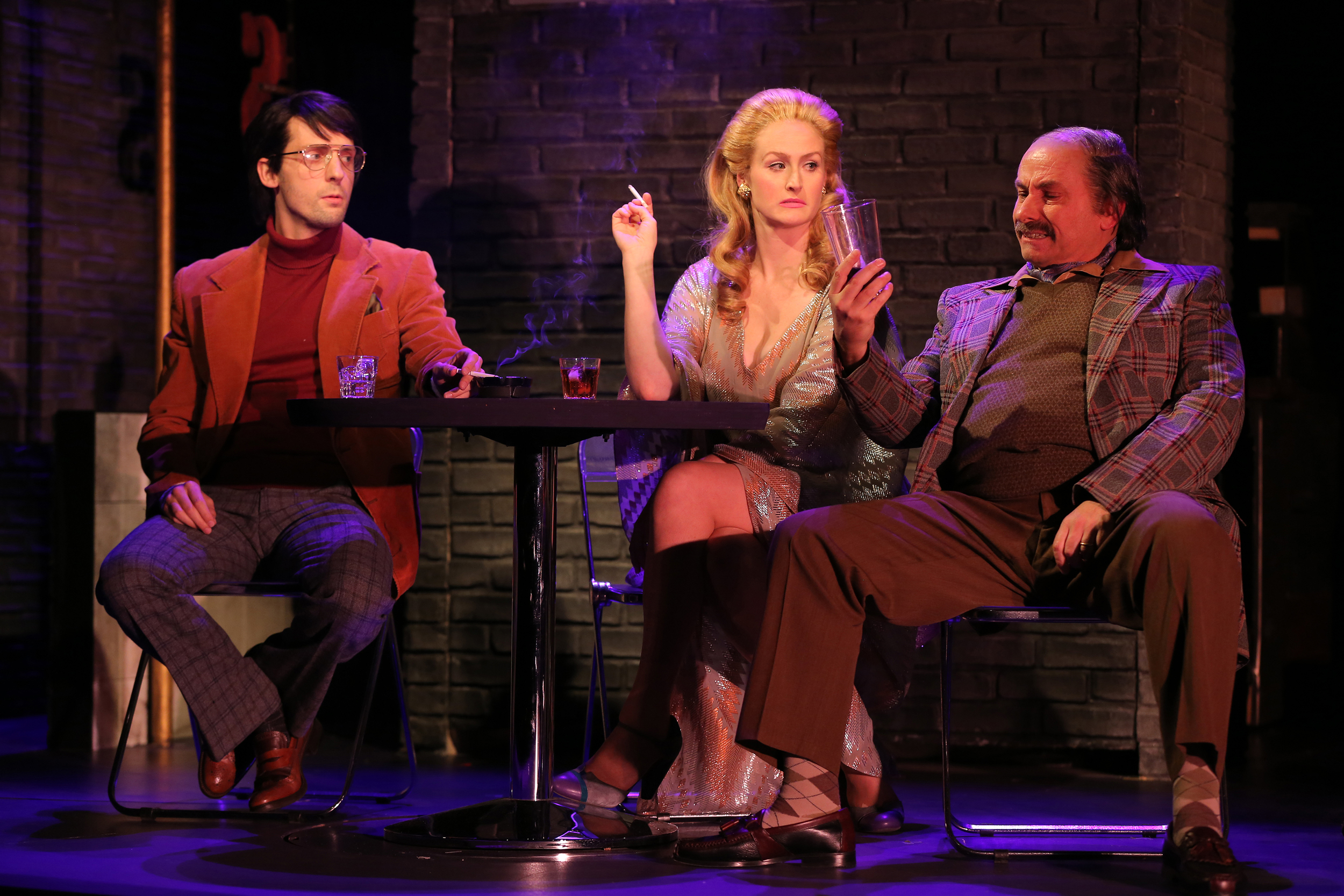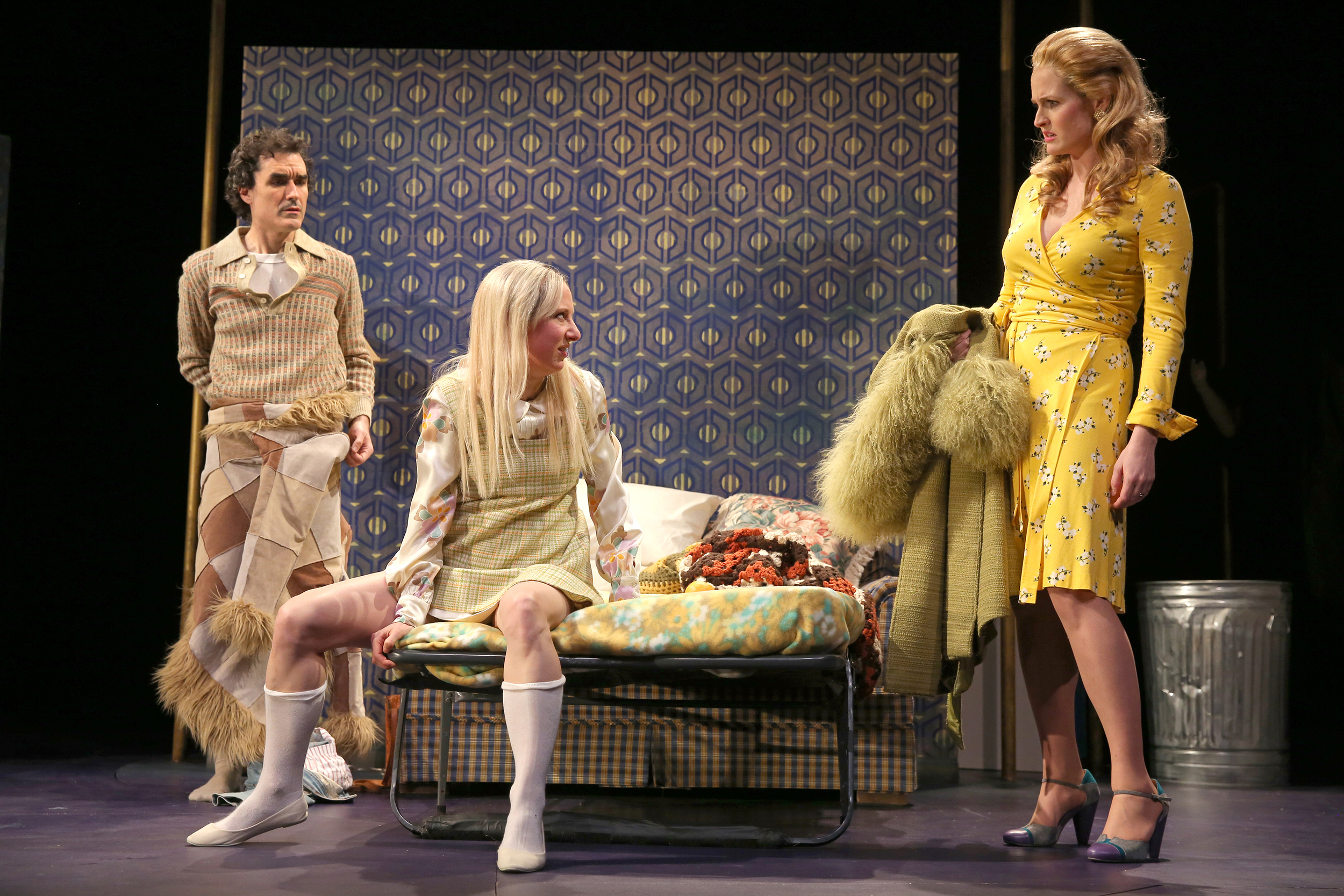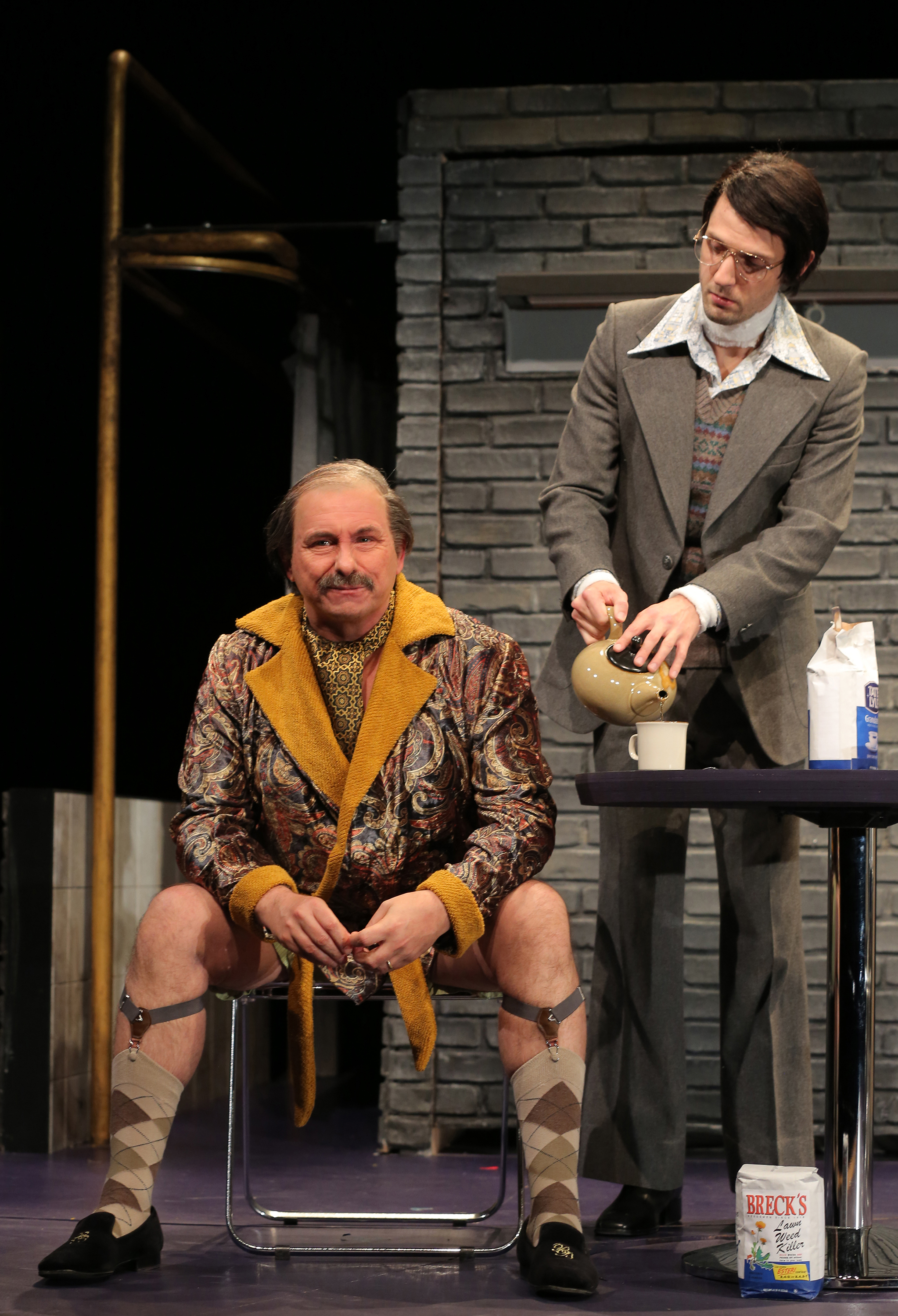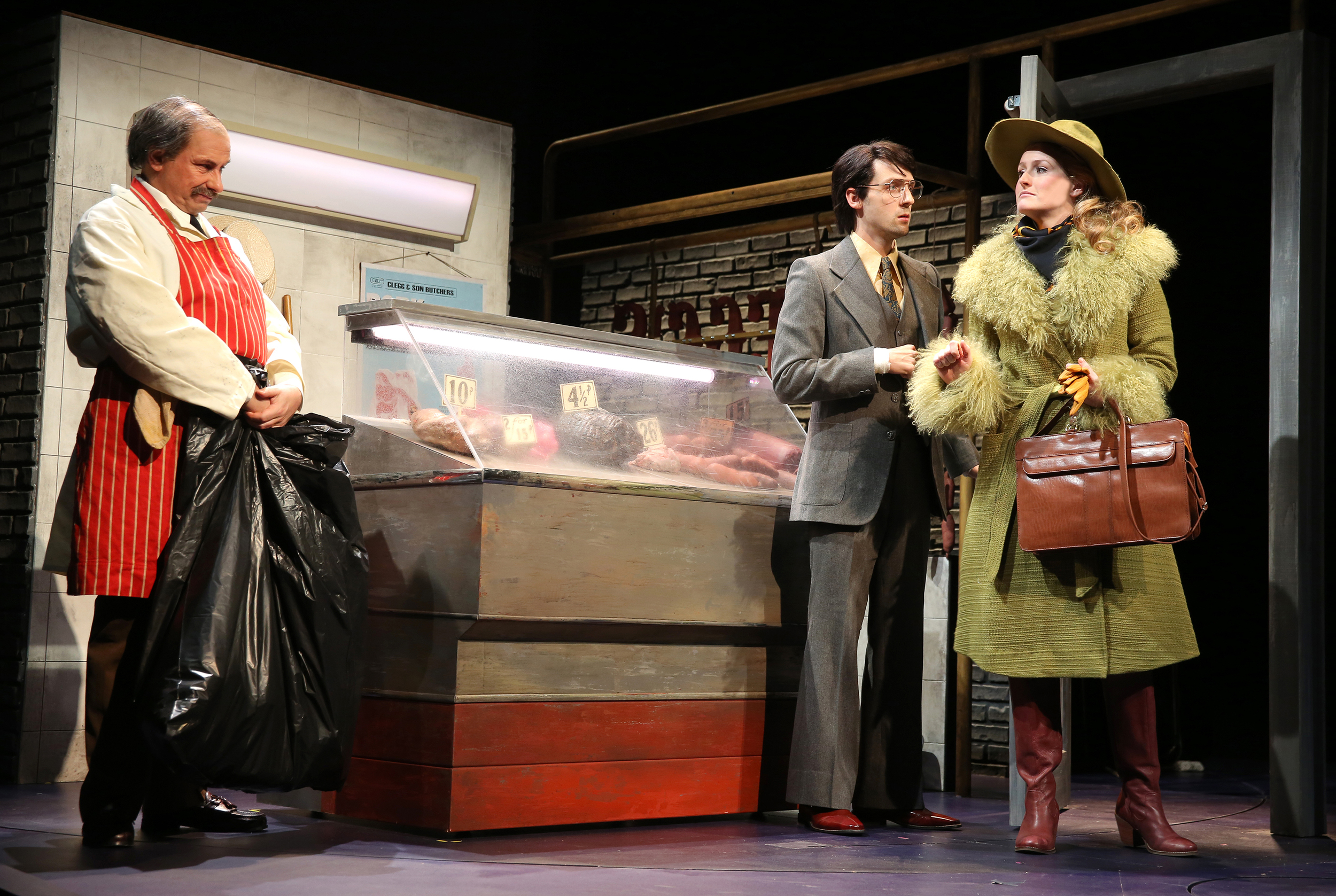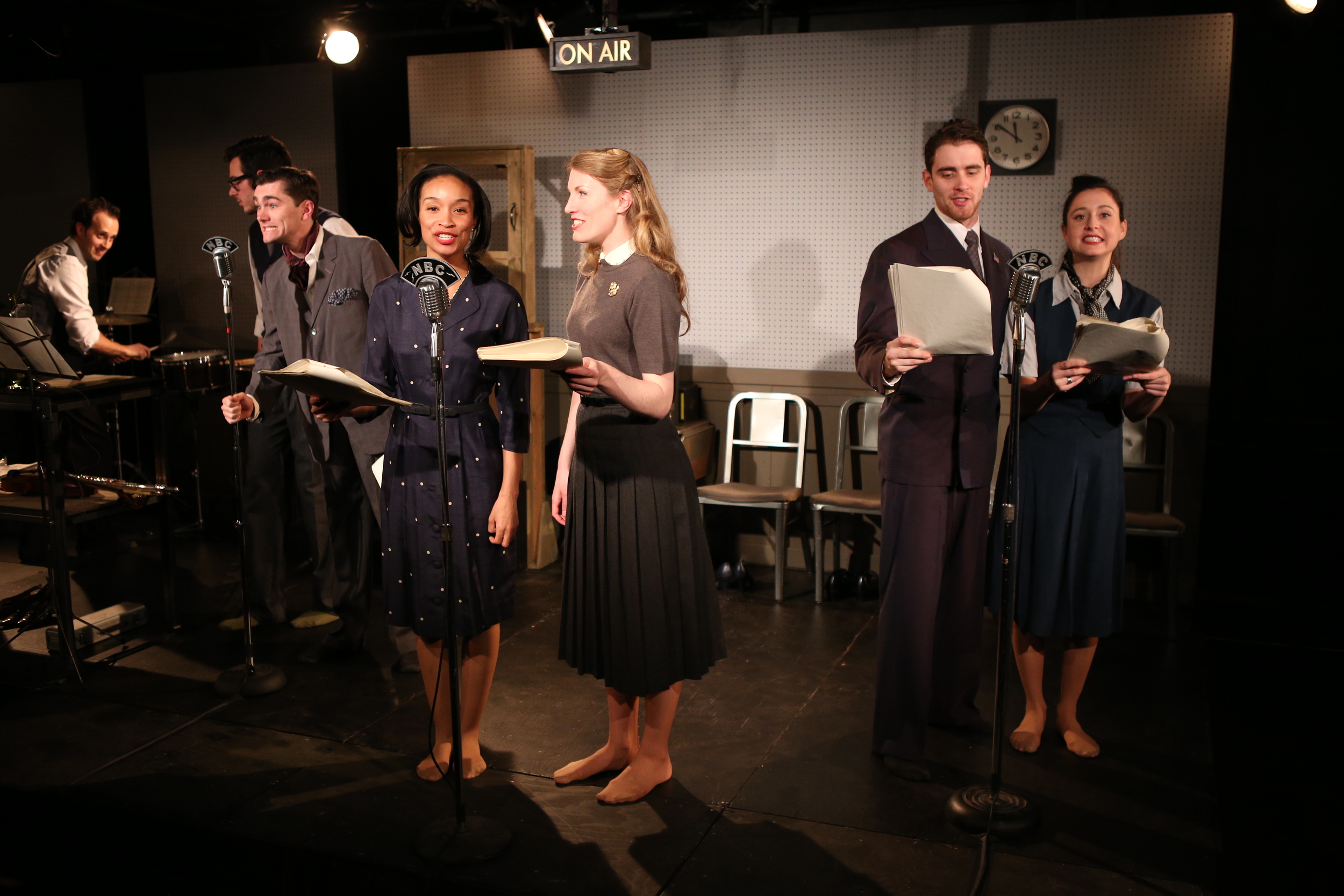In case you missed it: the once proud New Haven Advocate is no more. Granted, it hasn't been itself in a while, but as of last week, it's gone. Former NHA staff member Brian LaRue posted his take on the untimely demise on November 27. Here's what he had to say about it. You can see his original post at ItsBrianLaRue, and you can email him with comments at: brianglarue@gmail.com. At NHR we welcome comments to Brian's post as well as more detailed reflections from those who wrote for, worked at, or read avidly The New Haven Advocate at any time in its former existence. Submit the latter to editor@newhavenreview.com
Three Alt-Weeklies, My Own Salad Days and One Long Goodbye to Them All
This morning, the final editions of the three alt-weekly newspapers that serve Connecticut — the New Haven Advocate, Hartford Advocate and Fairfield County Weekly — all hit newsstands. The Hartford Advocate, which I discovered on the floor of my high school’s chorus room, was the first alt-weekly I ever read and inspired me to pursue journalism seriously. The New Haven Advocate, which I read religiously through college, opened my eyes to the premise that whatever I wanted to get out of doing journalism, I wasn’t getting it from being a journalism major. (I switched to English pretty quickly.) At some point in my 20s, I wrote for each of those three papers.
It’s often sad to acknowledge a significant part of your past is gone (and almost always a bum-out to realize you’ve reached an age when you can look back and notice how entities that at one point defined your life are totally gone), but my own sense of loss is a mere detail. The tragedy is that every region deserves an alt-weekly, and to imagine every Connecticut college campus and artists’ colony and band rehearsal complex not having one that serves its own denizens… well, the image just doesn’t feel like Connecticut to me. The Connecticut I know is home to a culture where mild crankiness and dry wit ride high, where homegrown music and art are championed by very vocal local boosters, where the landscape is dotted with a few of the more prestigious colleges and universities in the U.S., where the political conversation tends to pan leftward, and where an extremely diverse (economically and ethnically) group of people try to understand each other and get along. Connecticut is alt-weekly country, man.
Now, just to clarify things: There are some people who will probably say the Advocate, the NHAdvocate and the Weekly aren’t going anywhere. Those three papers — collectively, the New Mass. Media Group — are owned by the Hartford Courant, Hartford’s daily and paper of record (which in turn is owned by the long-flagging media giant the Tribune Corp.). The Courant has, for many years, published a weekly pull-out arts and lifestyle supplement called Cal. The New Mass. Media papers and Cal will henceforth be combined into one publication, to be called CTNow. This name reflects the longstanding domain CTNow.com, which had previously existed as a Courant-owned, web-only entertainment publication. New Mass. Media editorial staffers will hold onto their jobs — they’ll just be folded in under the CTNow umbrella. There will be some kind of paper in the old Advocate/Weekly boxes. It’ll just have a different name.
It’ll also have a different mission. Former colleagues of mine at New Mass. Media have told me the higher-ups at the Courant have instructed them to refrain from cursing in print and from writing about “edgy” topics. Furthermore, the Courant’s description of this whole re-branding project, in a recent memo to advertisers, as a “strategic realignment of our suite of entertainment products” misses the point of alt-weeklies entirely: They are supposed to be news publications, not merely “entertainment products.”
Look, even before everyone with an internet connection had the opportunity to publish anything at any hour of the day or night, alt-weeklies faced a particular challenge of timing. Dailies had the lock on breaking news. In order to be worth reading consistently, because they can expect to be scooped more often than not, alt-weeklies have to go in-depth and provide valuable context, to illuminate the characters involved, to explain the back story and point to potential outcomes. Most local dailies can only really go into a similar amount of depth in their weekend editions, because their reporters each have to polish off a handful of quick news stories every day and can’t sprawl out and devote 1,200 words to one topic. And alt-weeklies are supposed to be loud, opinionated, profane, funny, comforting, irksome, turgid, terse — because that’s how we are as human beings. Daily papers are expected to behave more decorously, “on the record,” so an alternative is needed to pick up the slack and join the conversation in the same tone as the people on the street. If you don’t have that, you don’t have an alt-weekly. And if the Advocate/Weekly papers lose their “alt-” functionality and become mere “entertainment products,” then they are effectively done.
There’s a tragedy for readers in losing the Advocate/Weekly papers, as I hope I at least partly explained, but there’s another tragedy, one that’s repeating throughout the world of alt-weeklies, and that’s the loss of opportunity for journalists, particularly young journalists. Oh, sure, it’s 2013, and there’s no shortage of outlets for a young, loud, opinionated writer to be loud and opinionated in media. But oftentimes — and I’ve written about this before, talking about the shift in media from the all-hands-on-deck newsroom to these networks of isolated bloggers — you lose the wisdom of the tribe that comes from being part of an editorial staff at a decades-old publication. And beyond that, working at an alt-weekly teaches a journalist so many important lessons. For reasons I’ve already laid out, when you report for an alt-weekly, you have to go deep. You have to figure out the not-obvious story. You have to become an engaging storyteller, not just a sharp transcriber. The editorial staff is small. (When I worked at the New Haven Advocate, the most full-time editorial staffers we ever had was seven, and that didn’t last long.) Your beat is broad. You need to learn your history, fast, so you know what to ask about and who to talk to. In general, you need to get really good. Really. Goddamned. Good.
I first came to the New Haven Advocate in the summer of 2004, in a manner that seems impossible now and was fairly improbable even for that time. I was sitting around in my apartment, unemployed, in a prolonged post-collegiate daze. “I should write CD reviews professionally,” I thought, and so I emailed Chris Arnott, the paper’s arts editor, to ask for his advice to a young aspiring music critic. He wrote back explaining, well, he started out in the early ’80s, and back then you cut your teeth in ’zines and then worked your way up to weeklies, and he just wasn’t sure how to navigate the blogosphere because he’d never had to, but he liked my band’s most recent CD-R and particularly liked my lyrics, so might I be able to come by the office the following afternoon?
When I did visit the Advocate’s office — located then in a sleek office tower 11 floors above the New Haven Green, which, for the low-slung Elm City, offered panoramic views in all directions — Chris explained the paper needed someone to take a crack at re-imagining and completely updating its upcoming annual guide to everything in the New Haven area. That was the assignment he had for me, and, well, once I was done, we could take it from there. He was excited to make progress — this issue, he said, would be an ideal showcase for this hot-shot young designer they’d just hired, this kid with a portfolio full of pieces inspired by pulp novel covers. Seconds later, I discovered that kid was my college friend Jeff Glagowski, and after a downright giddy reunion, Jeff, Chris and I started talking about the cover for this issue. We had this pulp theme, right? So let’s have a 50-foot-tall something laying waste to the Green. A giant Yale bulldog? …No, too needlessly antagonistic. A giant angry squirrel? …No, too in-jokey; you’d need to explain the Green is full of squirrels with attitude and… no. Finally, thinking of the man who’d held the highest elected office in the city for 10 years (and who would continue to hold it for 10 more), I said, “…How about a giant Mayor DeStefano?”
That was the one. It had just the right balance of “ridiculous” and “appropriate” to work. (And here it is as a lunchbox.):

That afternoon commenced about five years of having completely ridiculous ideas and, a week or two later, publishing 50,000 copies of them. I’ve explained — I hope — why alt-weeklies are important. But they’re also fun. They kind of have to be. The salaries are typically atrocious, the hours are long and the benefits are slim. There are reasons why so many young reporters in the alt-weekly world bounce around from one city and one paper to another, looking for the gig through which they can gain a foothold and advance. In his excellent appreciation of Boston Phoenix upon that esteemed alt-weekly’s shuttering, former Phoenix editor S.I. Rosenbaum pointed out how “the job itself had to be the reward.” You work for an alt-weekly because, every week, it feels like some combination of a public service and a tremendous prank you can’t believe you’re getting away with. You spend countless days in which you work from the moment you wake up to the moment you go to bed again because you know you’re helping to create an ongoing community institution, something thousands of people rely on for an experience they can’t get anywhere else, and you have to bring your A-game for them.
And then there are all the weeks when you and your colleagues end up putting something in the paper simply because it’s funny and you can and no one’s stopping you. One former editor of mine, Tom Gogola, had an ongoing campaign, several weeks long, of making sure there was at least one image of a goat in each issue of the paper. When the New Haven Coliseum was demolished, Chris Arnott had an idea to include a “Demolish Your Own Coliseum” kit in the paper — the staff created a design that was printed in the centerfold of the paper, and by snipping it out, folding along the dotted lines and affixing some tape, readers could set up their own tiny Coliseum and smash it however they wanted. Another time, before Christmas, we sent illustrator/writer Hugh Elton, who was then about 20 years old, out to sit in mall Santas’ laps and review their performances. During one editorial meeting, while joking about the tendency of the local daily, the New Haven Register, to publish cuddly human-interest stories, we decided to beat the Reg at its own game and devised the “kittencopia,” a horn of plenty from which protruded the pasted-together heads of about a dozen kittens, which we printed in several issues. One year on Valentine’s Day, I published a bitter ode to being broken up with that culminated with me proclaiming my adoration of my ever-trustworthy cassette four-track recorder. We sent contributing writer/illustrator Craig Gilbert out on the town wearing a Bigfoot suit, and photographer Kathleen Cei assembled a huge photo spread of Craig-as-Bigfoot riding a skateboard, browsing local shops and interacting with kids on the street.
We also published a lot of work that was cool and meaningful. We covered the work of housing advocates exposing the city’s worst slumlords. We covered the work of immigrants’ rights groups and told the very human stories of the perils faced by many of the city’s immigrants, before and after New Haven’s controversial move to issue IDs to undocumented residents. Reporter and editor Betsy Yagla brilliantly covered a high-profile local trial of a Navy sailor turned suspected Al Qaeda informant in 2008. Contributor Doron Monk Flake decided to throw a block party and logged the entire process of securing all the necessary permits and permissions. Tom Gogola, in 2005, insisted we use a tour stop by The Black Keys as an opportunity to put them on the cover, and assigned reporter Ryan Kearney to write the first comprehensive, long-form feature about them in any newspaper or magazine. I had the chance to interview Tommy Ramone, Lee “Scratch” Perry, Lou Barlow, Ian MacKaye, Juliana Hatfield, Ted Leo, Doug Martsch, Ian Svenonius, Zach Hill, Honus Honus, Mary Timony and countless others — an absolute dream for me as a 20-something rock musician. And our pages saw an endless stream of reviews, reports and columns by local musicians, artists, actors, filmmakers and so on, writing from the perspective that only active artists can bring to coverage of their own world. (This was a particular point of pride for Chris, that so many working artists of all disciplines would pitch in to write for the Advocate when we simply asked. “Other papers write about the scene,” he would often say, “but at the Advocate, the scene writes for us!”)
I have to acknowledge that I’m mainly remembering the Advocate for what it was at one time. I moved to Brooklyn in 2010 and missed out on the last three years of its existence, but it had been hobbled for at least a couple years by that point and the last three seem to have not been pretty. While New Mass. Media had been performing in the black for a long time, we were told, it reached a point when it couldn’t escape the effects of Tribune Corp.’s financial woes and eventual entry into bankruptcy proceedings. Many of the perks — like the vouchers advertisers would give to the paper in lieu of paying a balance in cash — dried up long before I left New Haven. There was a series of perhaps ill-thought-out hires at the management level, and content started to suffer. Long-time staffers gradually left all three New Mass. Media papers, and a hiring freeze prevented them from being replaced. The Weekly shuttered its Bridgeport office and moved operations to the New Haven Advocate’s office. Both papers eventually moved into a small storefront several blocks from that glorious 11th-floor perch. New Mass. Media didn’t have an easy time finding a digital foothold. Sales departments had some difficulty selling into the websites, and the sites were plagued by poor navigation and the disappearance of huge chunks of its web archives.
Eventually the Advocate/Weekly’s web properties were shunted into one tab on the CT.com domain — a tab labeled “The Advocates,” a designation no one in the editorial department of any NMM paper ever used, and which was probably as nonsensical to readers. I don’t think the consolidation of the Advocate/Weekly papers was a natural function of how print (and certainly not digital) media has performed in the 21st century. I think it goes to show the Courant’s management didn’t have a clue about what the brand of each of these papers was worth, or about the value audiences derived from the publications. The management has rolled these media properties up into something they can understand, which does not reflect the value audiences recognized in them during the days when they were performing in a functional fashion.
In any case, I’m in a position I never thought I’d be in: I’ve seen my former colleagues put the paper to bed for one more week, except this is the last time it’ll wake up on Wednesday morning. New Haven Advocate, Hartford Advocate, Fairfield County Weekly — you all did right by me. You shocked, amused and, most importantly, educated who knows how many people, and you turned me into a grownup along the way. Goodnight, old friends.
